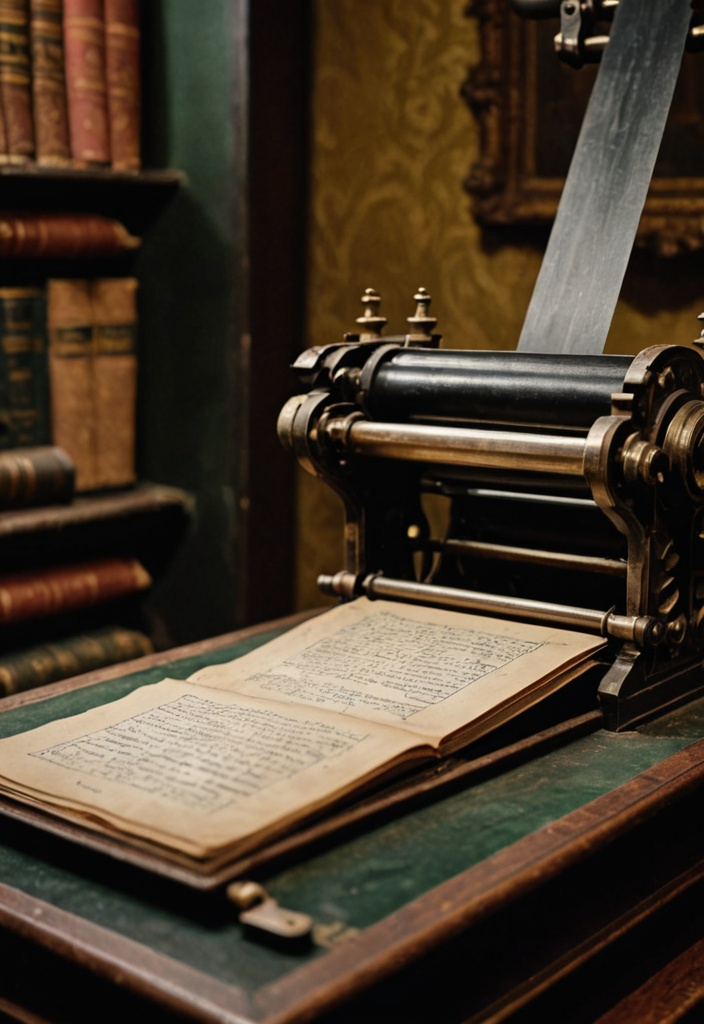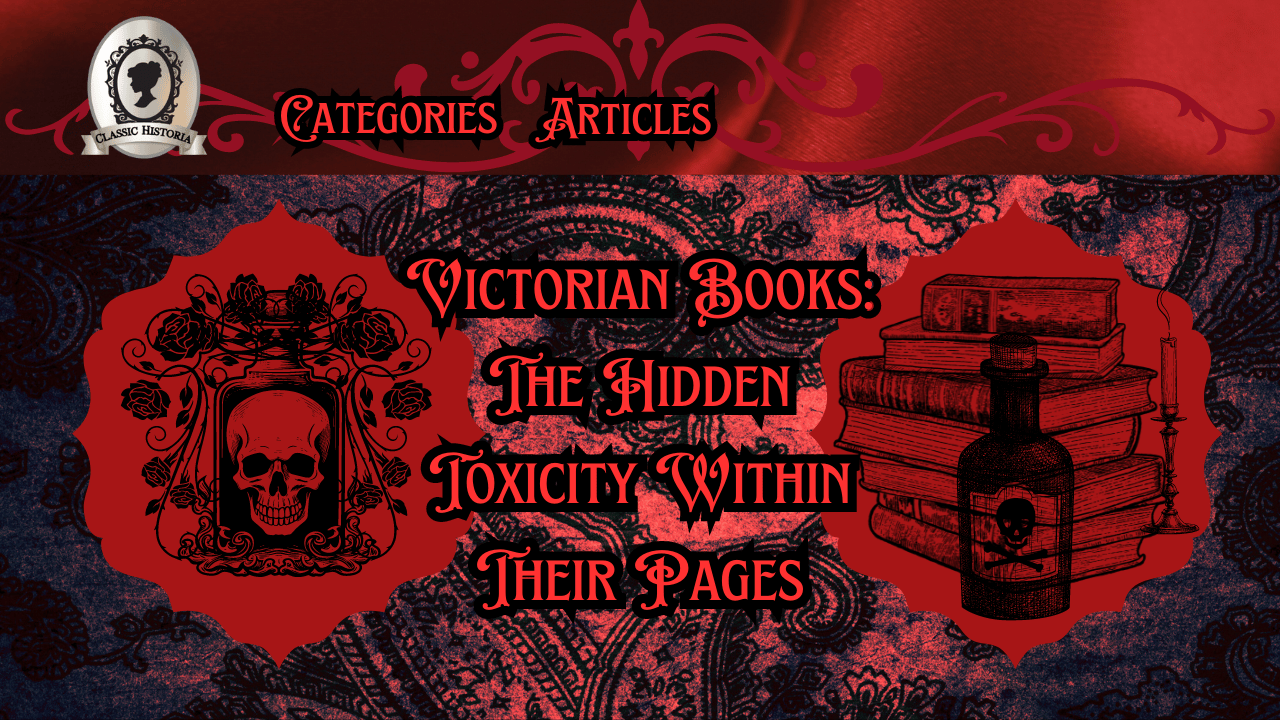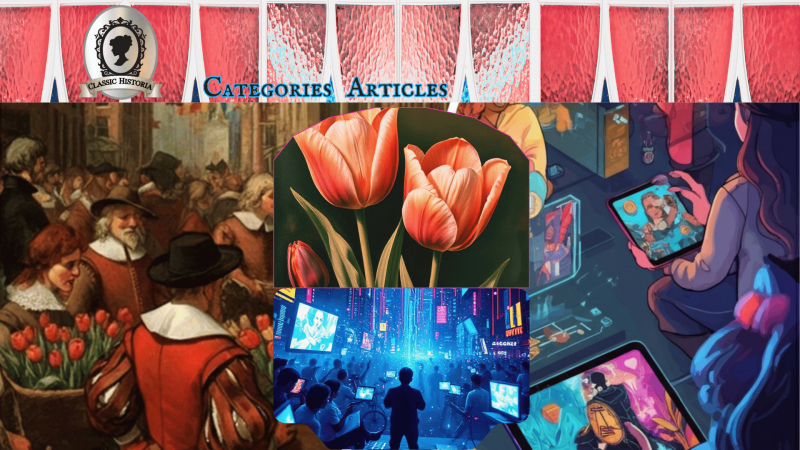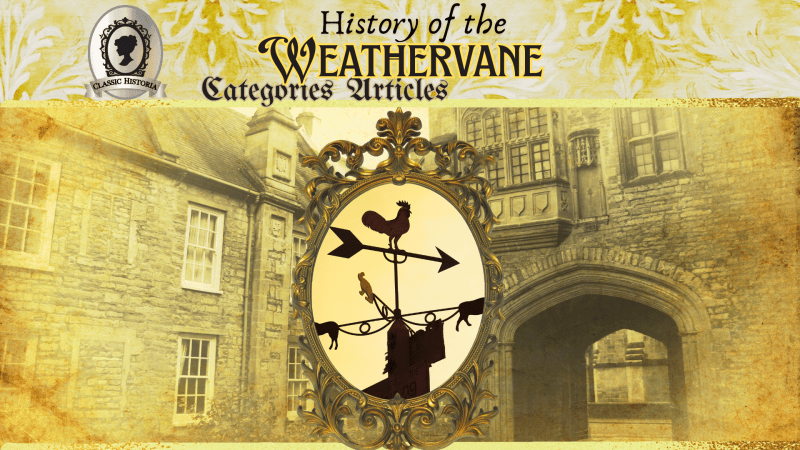Classic Historia may receive a commission on purchases made through Amazon and eBay affiliate links at no additional cost to you.
The Victorian era produced some of the most cherished literature, with books that continue to captivate readers today. However, what is less known is the potential toxicity found within their pages. During this period, publishers employed vibrant dyes and inks to enhance book covers and illustrations, many of which contained harmful substances like arsenic and lead. These toxic compounds were not only present in the pigments but also occasionally in the bindings and paper materials themselves. While modern handling of antique books presents minimal risk under controlled conditions, there is a growing interest and concern in understanding how these materials may have impacted publishers, printers, and readers of the past. This intriguing intersection of literary history and material science sheds light on the hidden hazards lurking within the beloved tomes of Victorian literature.

The Use of Arsenic in Victorian Book Production
During the Victorian era, arsenic was commonly used as a pigment in book production. It provided a vibrant green color and was used to create illustrations and decorate book covers. However, this substance is highly toxic, and prolonged exposure can lead to serious health issues, including respiratory problems, skin irritation, and even death.
One of the most infamous examples of arsenic use in books is the popular novel "The Picture of Dorian Gray" by Oscar Wilde. The iconic green cover was created using a dye called Scheele's Green, which contained significant amounts of arsenic. Many copies of this book still exist today with their original vibrant green covers, posing a potential health risk to readers and handlers.
Aside from its aesthetic appeal, arsenic also had practical use in book production. It acted as a preservative, preventing insects and rodents from damaging the books. This was especially important during this time period when paper was made from wood pulp, which attracted pests.

The Impact on Publishers and Printers
The use of arsenic in book production not only posed a health risk for readers but also for those involved in the publishing process. Publishers and printers were exposed to high levels of arsenic while handling the pigments and dyes used in book illustrations and covers. They had often experienced symptoms such as skin irritation, respiratory issues, and even blindness due to prolonged exposure.
In fact, some printers who worked with arsenic-based dyes regularly were known to have developed a greenish hue on their skin, earning them the nickname "the Green Men of Printing". This further emphasizes the dangers of working with this toxic substance in book production.

The Ban on Arsenic in Book Production
As more and more cases of health issues related to arsenic exposure were reported, there was a growing concern about its use in book production. In 1862, an English chemist named Robert Christison published a paper highlighting the dangers of using Scheele's Green and other arsenic-based pigments in books. This led to increased awareness and eventually resulted in legislation to ban the use of arsenic in book production.
In 1869, the British Arsenic Act was passed, which restricted the use of arsenic in any form for coloring or printing purposes. Similar laws were enacted in other countries such as France and Germany. As a result, publishers and printers were forced to find alternative, safer pigments to use in their books.

The Legacy of Arsenic in Books
Despite being banned from book production, traces of arsenic can still be found in many antique books today. This is because the pigment does not break down easily and can remain present even after years or decades. Therefore, it is important for collectors and handlers of these old books to take necessary precautions in handling them, such as wearing gloves and avoiding direct contact with the pages.
The legacy of arsenic in book production serves as a reminder of the dangers of using toxic substances in manufacturing processes. It also highlights the need for stricter regulations and safety measures to protect workers and consumers from exposure to harmful chemicals. As we continue to learn more about the potential health risks associated with certain materials, it is important to prioritize safety and make informed decisions when it comes to choosing materials for book production. Let us not repeat the mistakes of the past and instead strive towards creating a safer and healthier environment for all involved in the book industry. So, it is crucial that we continue to research and improve upon the materials used in book production to ensure the safety of both creators and consumers.
Moreover, the issue of arsenic in books also sheds light on the importance of preserving our cultural heritage. These antique books hold valuable information about our history and society, and it is our responsibility to protect them for future generations. This includes not only handling them with care but also implementing proper preservation techniques to prevent further deterioration.
In conclusion, the legislation to ban arsenic in book production was a crucial step toward promoting safer practices in the publishing industry. However, its legacy continues to remind us of the consequences of using toxic substances and the need for ongoing efforts towards creating a safer and more sustainable environment for all
Classic Historia's Classic Literature Collection:
Discover Classic Historia's Classic Literature Category
At ClassicHistoria.com, the Classic Literature Category offers a curated selection of NEW, antique-style books designed to capture the timeless charm of literary masterpieces. Each book in this collection is available in exquisite hardcover or luxurious leatherbound editions, embodying the elegance and craftsmanship of classic bookbinding traditions. Ideal for collectors, literary enthusiasts, and those who appreciate the aesthetic beauty of timeless literature, this collection transforms reading into a sensory experience. From the intricate embossing on the covers to the high-quality paper used within, every detail reflects a commitment to preserving the grandeur and sophistication of classic works. With ClassicHistoria.com, readers can build a personal library that not only celebrates great literature but also serves as a testament to the enduring appeal of thoughtfully crafted books.
Like this article? Discover more at Classic Historia for a deeper exploration into the past that has shaped our world.
Stay connected with Classic Historia and discover more timeless treasures by following us on our social media platforms:
Business Phone Number:
(833) 222-7544
Business Address:
1220 Oak Street, Suite J PMB1007
Bakersfield, CA 93304-1072
United States










